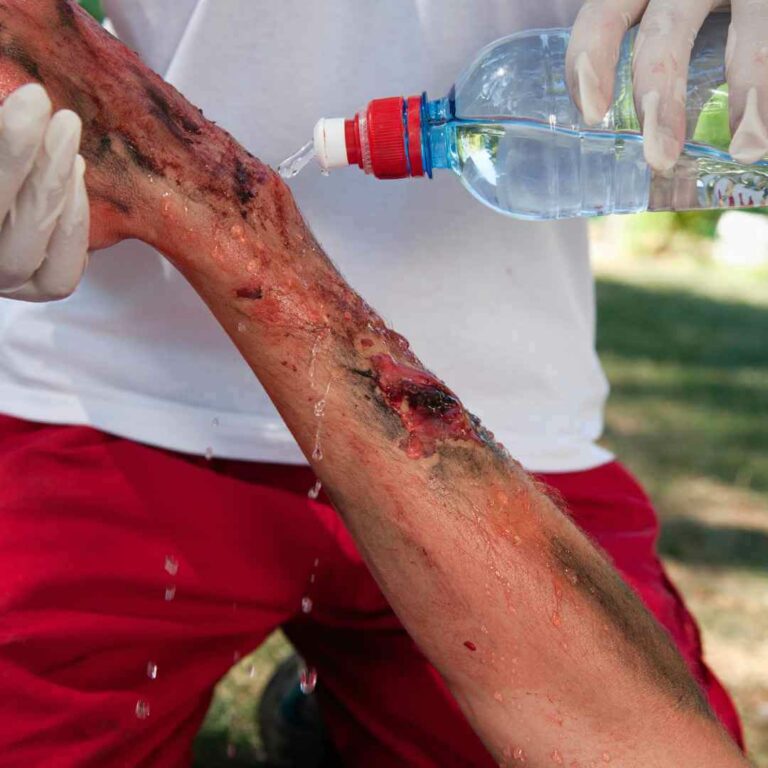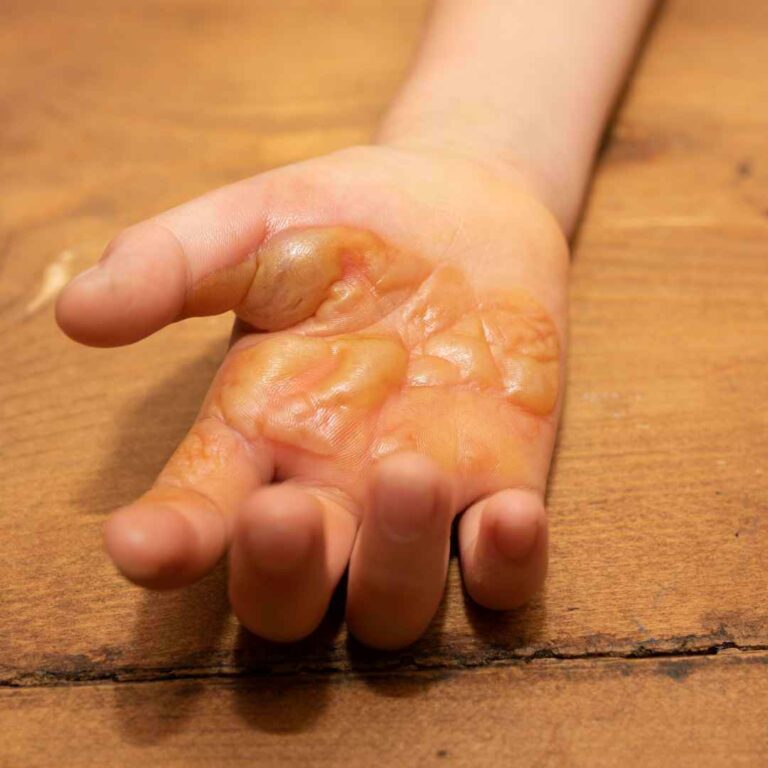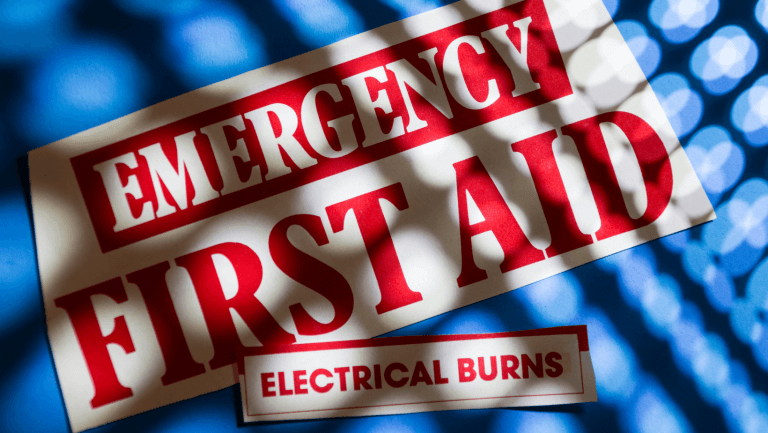First Aid for Burns and Scalds

Being familiar with first aid for burns and scalds is essential to minimise permanent injury or scarring.
Our skin is the largest organ of our body, covering 20 square feet!
In the following blog post we will go over some important facts and first aid tips for a quick response to burns and scalds.
In June every year, it’s Burns Awareness Month for children. This aims to create greater awareness of burns prevention and baby and child first aid treatment for burns.
Emergency situations
- 33% of the burn injuries presented to hospitals were children aged 1-2 years.
- Scalds account for nearly 60% of burns in children
- 79% of burn injuries occur in the home.
- 50% of children are burnt in the kitchen
- Flame burns are more common in the 11-15 age group
The first thing we need to do when someone sustains a burn or scald, is remove the heat source and start cooling the skin. After someone has sustained a burn, the skin can continue to burn. This is also why we say not to cover the burn with oils or creams, as this can actually trap the heat and make the continued burning worse.
Kids are curious, small and have the type of skin that needs extra protection. Children’s skin burns more easily than adults.
Burns are a major cause of injury in children, especially those aged between 1 – 2 years, due to their sudden ability to mobilise and investigate!
First aid for scalding water
Third degree burns can be easily caused. It only takes 1 second for water at 60ºC to cause this kind of burn, 10 seconds at 55ºC and five minutes at 50ºC
You can actually adjust your temperature setting on your water heater to reduce the risk of burns. A small child may be able to run the bath and jump in. This risk would be eliminated if the temperature was set.
First aid for burns
- Treatment is the same for all burns.
- The burn must be held under cool running water for 20 minutes
- Remove any jewellery or clothing.
- If clothing is stuck to the burn, do not remove it. This causes trauma to the skin and should only be done under medical supervision.
- Only target the burn with the running water, keep the rest of the casualty warm with clothes and blankets.

Medical attention should be given if:
- The casualty does not feel any pain. This may be a sign of shock.
- If the burn is deep
- The burn is larger than a 50c (3cm) coin and has blisters
- The burn is on the face, hands, feet or genitals. Burns can heal with thickened and tight skin, inhibiting some movements. This could be permanent so it is essential to get burns to these areas checked by a medical professional.
- Is the burn to the airway or throat? Burns swell so this kind of burn can compromise the airway. Get this checked before you eat or drink anything, especially in children. Your swallow could be compromised too.
The burn then needs to be covered with either cling film or a loose, non-stick dressing, until seen by a doctor. This initial dressing should only be left in place for no longer than an hour.
There is no need to use freezing cold water or ice. This can just cause pain and could also cause further freezer burns.
Never apply creams or lotions to a burn. This can cause the heat to get trapped and continue burning. Your Dr or GP may give you a cream but this will be specifically for burns.
We talk about the criteria for calling an ambulance for burns in our first aid courses.

How can we prevent burns in adults and children?
- Keep cups of hot drinks out of reach of children and with secure lids on.
- Place baby safety gates on entries to the kitchen
- Place appliance cords, and trip hazards and saucepan handles towards the back of benches, tables and stoves so that they can’t be knocked
- Keep kettles, jugs and teapots away from the edge of benches or tables.
- If moving pots of hot oil or water across the kitchen, make sure your path is obstacle free
- Place the microwave out of reach of young children but at a chest height for adults
- Check the temperature of food cooked in a microwave after it has been stirred before eating
- Spend time with your child teaching them basic kitchen safety.
- Purchase and use oven mitts.
- Keep a fire blanket, fire extinguisher and first aid kit near the kitchen and easily accessible.
Want more? We’ve got you covered…
Our Baby First Aid Courses
Our baby first aid courses are available in person in your home and online. We run classes in your home with groups of 2, 4 or up to 10 in Sydney & Melbourne and you can book in 3 easy steps!
- Pick your class
- Follow the prompts to purchase
- We will contact you within 24 hours to lock in your date of choice
Our First Aid Certificate Courses
We run most of the popular first aid courses Australia wide. HLTAID011 Provide First Aid, HLTAID009 Provide CPR, HLTAID012 Provide First Aid in an Education & Care Setting, RAMOAP (anaphylaxis), Mental Health first aid and CPR/LVR to name a few.
Book your public spot online or contact us if you have a group of 5+ people for onsite training.
Here are some other resources you may enjoy!
FREE GUIDE: Your Virtual Baby First Aid Kit
FREE GUIDE: Introducing Common Allergy Foods & Allergic Reactions
FREE Workplace Emergency Preparedness Plan: Grab this at the bottom of every page!
Follow for baby & child first aid and allergy info and tips on Instagram, TikTok & Facebook all @thenestcpr
